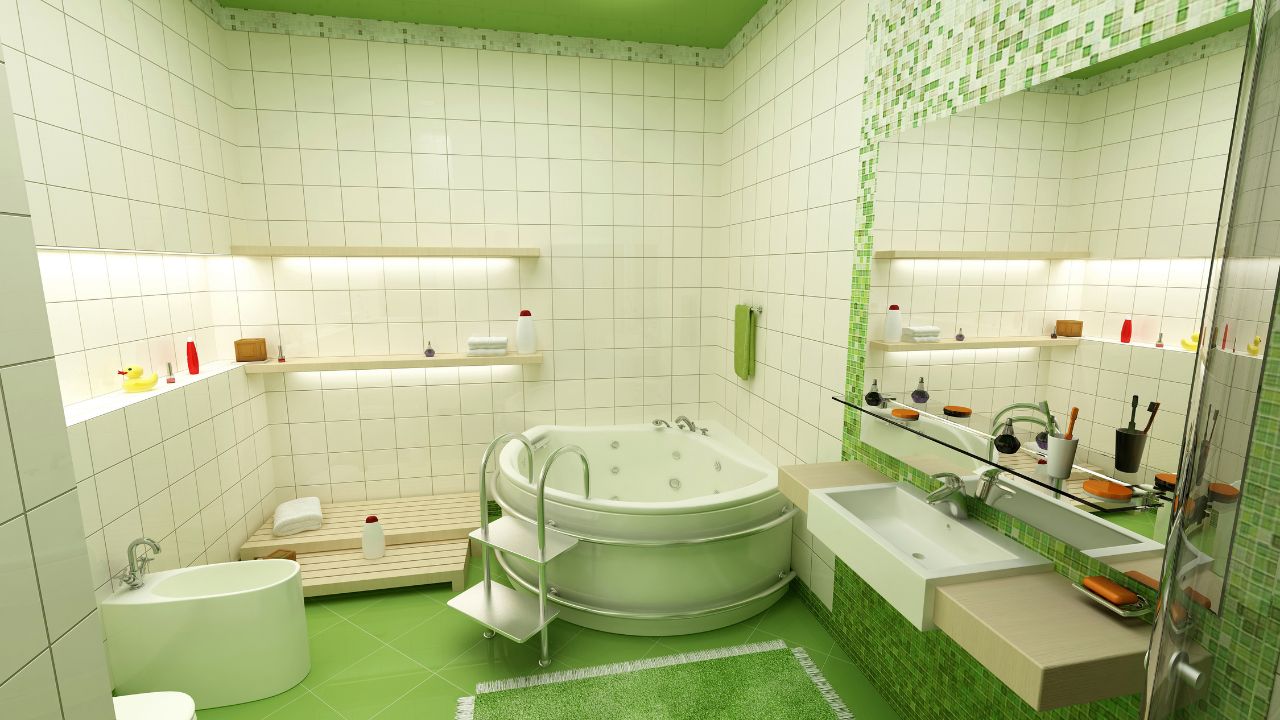As the world becomes more conscious of the need to conserve resources and reduce our impact on the environment, innovative green toilet designs have emerged as a promising solution for a greener future. These revolutionary concepts go beyond mere water-saving mechanisms and delve into groundbreaking technologies that address issues such as waste management, energy efficiency, and sustainable materials. From composting toilets that transform human waste into valuable fertilizer to sleek urban urinals that harvest urine for agricultural purposes, these forward-thinking designs are pushing the boundaries of sustainability in sanitation. In this article, we will explore some of the most exciting green toilet designs that promise to revolutionize our approach to hygiene while minimizing our ecological footprint.
The Need for Innovative Green Toilet Designs
Innovation is the key to solving some of the most pressing challenges we face today, including environmental sustainability. One area where innovative solutions are desperately needed is in toilet design. We often overlook the impact our traditional toilets have on the environment, from excessive water consumption to sanitation issues. It’s time for a revolution in green toilet designs that not only address these problems but also offer fresh perspectives on waste management. Imagine a future where every household has a green toilet that uses minimal water and incorporates advanced technologies to efficiently process human waste while preserving water resources.
These innovative designs could drastically reduce our reliance on outdated sewage systems that contribute to pollution and health risks. Additionally, incorporating renewable energy sources into these toilets can further enhance their sustainability by powering essential functions such as water pumps or waste processing systems.

Section 1: Water-Saving Technologies
Water-saving technologies have taken the world by storm, revolutionizing the way we conserve and use water. One technology that has generated quite a buzz is the introduction of green toilets. These innovative fixtures are not only environmentally friendly but also highly efficient in minimizing water consumption. By utilizing dual-flush mechanisms or low-flow options, green toilets can drastically reduce water usage without compromising on functionality.
What sets these green toilets apart is their ability to meet our daily needs while making conscious efforts towards sustainable living. With dual-flush technology, users have the option to flush with less water for liquid waste and more for solid waste, ensuring optimal resource utilization. Additionally, low-flow options offer significant reductions in water consumption by using smaller amounts per flush compared to traditional toilets. These advancements not only help homeowners save money on their monthly bills but also contribute to conserving one of our most precious resources – water.
Section 2: Composting Toilets for Sustainable Waste Management
Composting toilets are revolutionizing sustainable waste management, offering a greener alternative to traditional flush toilets. These eco-friendly marvels turn human waste into nutrient-rich compost that can be safely used as fertilizer. But beyond their obvious environmental benefits, composting toilets also enable off-grid living and reduce water consumption. One exciting aspect of composting toilets is their versatility. Unlike traditional flush toilets that require extensive plumbing networks, these green systems can be easily installed in any location, making them ideal for remote cabins or campsites.
Not only do they mitigate the need for costly sewage infrastructure, but they also provide a practical solution for areas with limited access to clean water resources. Another noteworthy advantage of composting toilets is their potential to close the loop on our food production system. By aligning our waste management practices with sustainable agricultural approaches, we not only address the pressing issue of waste disposal but also create a holistic and circular economy where nothing goes to waste.
Section 3: Solar-Powered Toilets for Off-the-Grid Solutions
Imagine having a toilet that not only provides a hygienic and comfortable experience but also runs on renewable energy. Enter solar-powered toilets, the green solution for off-the-grid environments. These innovative systems utilize the power of the sun to generate electricity, making them perfect for remote locations with limited access to utilities. One of the key advantages of solar-powered toilets is their ability to operate completely off grid.
By relying on solar energy, these toilets eliminate the need for traditional plumbing or sewage systems, making them ideal for areas without proper infrastructure. In addition, they reduce environmental pollution by utilizing sustainable power sources instead of fossil fuels. Some models include features like self-cleaning mechanisms and bio-digesters that decompose solid waste into harmless compost or biogas. This innovative approach not only reduces water consumption but also provides a means of generating renewable energy from human waste.
Section 4: Smart Toilets with Advanced Features
Smart toilets with advanced features are revolutionizing the way we think about bathroom technology. Not only do these high-tech commodes provide unparalleled comfort and convenience, but they also offer impressive environmental benefits. Green toilets are designed with water-saving features that help reduce water consumption without compromising on performance. One innovative feature of smart toilets is their ability to automatically adjust the amount of water used for each flush, based on the waste that needs to be removed.
This not only saves gallons of water but also helps protect our precious natural resources. some models come equipped with sensors that detect when a person is in close proximity to the toilet, activating a sensor-operated flushing mechanism that ensures no water is wasted unnecessarily. In also to their eco-friendly functionalities, smart toilets also boast enhanced hygiene features. Many models have self-cleaning options that eliminate the need for harsh chemical cleaners or scrubbing brushes. Some even have built-in bidet functions which provide gentle cleansing using water sprays instead of traditional wiping methods – promoting cleanliness and reducing paper wastage at the same time.
Section 5: Green Materials and Eco-Friendly Construction Methods
Traditional toilets consume large amounts of water with each flush, contributing to water scarcity and increasing utility bills. However, green toilets use significantly less water, making them a sustainable choice for environmentally conscious homeowners or business owners. Also, green toilets often incorporate advanced flushing technologies that utilize gravity and air pressure to eliminate waste efficiently. Not only does this minimize water usage, but it also reduces the need for harmful chemical cleaning agents.
By opting for green toilets in construction projects, we can significantly reduce our freshwater consumption and contribute to a more eco-friendly future. Furthermore, eco-friendly construction methods extend beyond just using green materials; they also focus on minimizing waste generation during the building process. Modular construction techniques, for example, allow for pre-fabricated components that fit together seamlessly like puzzle pieces. This not only results in lesser material wastage but also allows for faster project completion times compared to traditional construction methods.
By incorporating green materials into our buildings along with embracing innovative construction practices such as modular construction and utilizing efficient systems like green toilets, we can make substantial progress towards sustainability goals while simultaneously enjoying cost savings on utilities. It is essential that architects and builders embrace these environmentally friendly techniques as part of their commitment towards creating greener structures for a better tomorrow.
Types of composting toilet systems
One type of composting toilet system is the self-contained unit. These units are typically compact and portable, making them a popular choice for off-grid living or camping trips. They work by separating liquids from solids, using natural processes to break down waste into compost that can be safely used as fertilizer. Another type of composting toilet system is the central or remote unit. Unlike the self-contained unit, this system consists of separate components: a toilet fixture connected via plumbing to a centrally located composting chamber. This allows for multiple toilets to be connected to the same composting system, making it suitable for larger households or commercial buildings. The centralized design also enables more efficient odor control and easier maintenance of the compost pile.
Health and Safety Aspects
These innovative fixtures not only offer benefits for the environment but also contribute to people’s overall well-being. By implementing green toilets in workplaces or public spaces, organizations can prioritize sustainability while ensuring the health and safety of their employees and visitors. One of the key advantages of green toilets is their water-saving capabilities. Traditional flush toilets use a significant amount of water per flush, contributing to wastage in areas where water scarcity is a concern.
Green toilets use advanced technologies such as dual-flush systems or low-flow mechanisms that significantly reduce the amount of water consumed with each use, conserving this precious resource. In addition to conserving water, these eco-friendly solutions help prevent sewage overflows by efficiently managing wastewater flow.
Conclusion
In conclusion, innovative green toilet designs hold great potential for creating a greener future. By incorporating features such as water-saving mechanisms, waste-to-energy conversion systems, and sustainable materials, these toilets can significantly reduce our environmental impact. Additionally, the use of smart technologies and IoT connectivity can improve efficiency and provide real-time data for better management of resources.
The adoption of these designs on a large scale can not only conserve water and energy but also contribute to waste reduction and the overall sustainability of our communities. Therefore, it is crucial that individuals, policymakers, and businesses alike support the development and implementation of these innovative green toilet designs to create a more sustainable and eco-friendly future. Together, we can pave the way towards a greener world.












Commented Posts